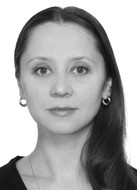Special physical education service model for students with health limitations
Фотографии:
ˑ:
Postgraduate O.V. Mamonova1
Dr.Hab., Professor S.I. Filimonova1
PhD, Associate Professor Т.N. Shutova1
G.B. Kondrakov1
1Plekhanov Russian University of Economics, Moscow
The study was performed at Plekhanov Russian University of Economics in the academic years of 2016-18, with the economics students’ sample split up into an Experimental Group (EG, n=82) and Reference Group (RG, n=80). The special physical education service model for students with health limitations was designed on a categorical basis for the following groups: visually-impaired group; group with musculoskeletal disorders/ disabilities (formally exempted from academic physical education classes); mentally retarded group; special health group; sporting group; and foreign students’ group. The special health group was trained by a special training model including therapeutic gymnastics, swimming, water fitness and billiards practices; the group with musculoskeletal disorders/ disabilities (formally exempted from classes) was offered the research project activity, billiards, energy balancing skills mastering workshop, step counting, industrial gymnastics and eye gymnastic practices. The special physical education service model for students with health limitations was tested beneficial as verified by the EG significant progress versus RG in the physical fitness rates and minor progress in the functionality rates.
Keywords: students, special educational needs, physical education, model, health gymnastics, billiards, water fitness, swimming.
References
- Goncharova L., Kukushkina O. I. Rebenok s osobymi obrazovatelnymi potrebnostyami [Child with special educational needs]. Almanakh Instituta korrektsionnoy pedagogiki RAO. 5/2002. [Electronic resource]. Available at: http://www.ise.iip.net/almanah/5/st04.htm.
- Egorov P.R. Sozdanie spetsialnykh usloviy obucheniya studentov s osobymi obrazovatelnymi potrebnostyami [Providing special conditions for teaching students with special educational needs]. Sibirskiy pedagogicheskiy zhurnal, 2014, no. 5, pp. 151–154.
- Karpova E.E. Osobennosti postroeniya zanyatiy po fizicheskoy kulture so studentami, imeyuschimi osobyie obrazovatelnye potrebnosti [Specific design of physical education lessons for students with special educational needs]. Problemy sovremennogo pedagogicheskogo obrazovaniya, 2017, no. 57 (6), pp. 209–215.
- Ovsyannikova M.A., Bindusov E.E., Fomin Yu.A. [ed.] Vliyanie razlichnykh sistem ozdorovitelnoy gimnastiki na fizicheskuyu podgotovlennost devushek 17–19 let [Effect of various recreational gymnastics systems on physical fitness of 17-19 year-old girls]. Sbornik mater. nauch. konf. studentov, magistrantov, aspirantov i soiskateley MGAFK [Proc. sci. conf. students, undergraduates, post-graduates and applicants of MSAPC]. No. XIX. Malakhovka: MSAPC publ., 2010, pp. 173–175.
- Pavlyuchenko, O.A., Fominykh A.V. Natsionalnye igry i ikh ozdorovitelnoe vozdeystvie na studentov s oslablennym zdorovem Khakasii [National games and their health-improving effect on students with weak health of Khakassia]. Nauchnoe obozrenie, 2009, no. 5, pp. 4–8.
- Ulyaeva G.G. Sotsialno-psikhologicheskaya adaptatsiya studentov s posledstviyami detskogo tserebralnogo paralicha, sredstvami adaptivnoy fizicheskoy kultury. Avtoref. dis. kand. ped. nauk [Adaptive physical education for socio-psychological adaptation of students suffering from infantile cerebral palsy. PhD diss. abstract]. Moscow, 2004, 22 p.
- Fazleeva E.V. Distsiplina «Fizicheskaya kultura» dlya studentov s osobymi obrazovatelnymi potrebnostyami – realnost i perspektivy [Physical Education discipline for students with special educational needs - reality and prospects]. Gumanitarnye, sotsialno-ekonomicheskie i obschestvennyie nauki, 2014, no. 3, pp. 183–186.
- Shutova T.N. Fitnes i kompyuternye tekhnologii v optimizatsii fizicheskogo vospitaniya studentov [Fitness and computer technologies to optimize academic physical education]. Teoriya i praktika fiz. kultury, 2016, no. 3, P. 101.




 Журнал "THEORY AND PRACTICE
Журнал "THEORY AND PRACTICE